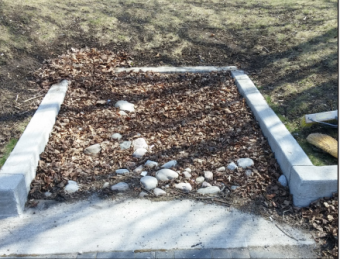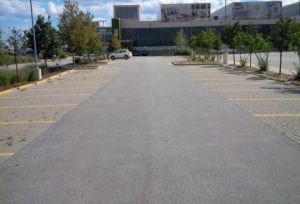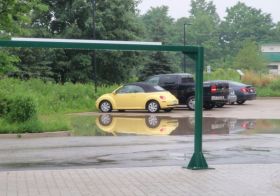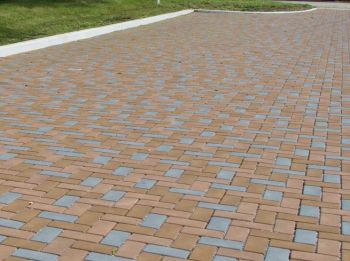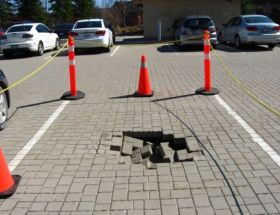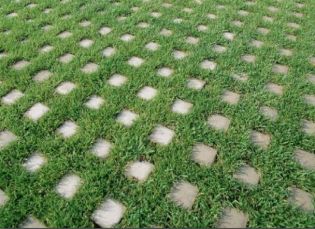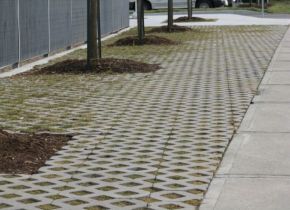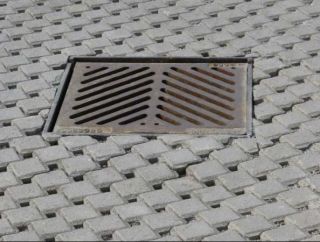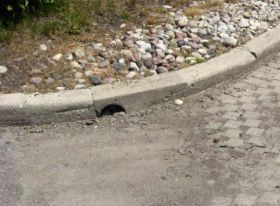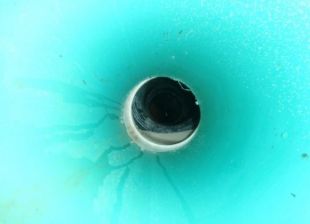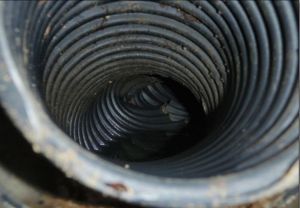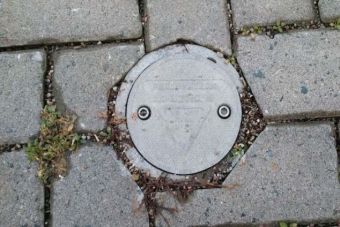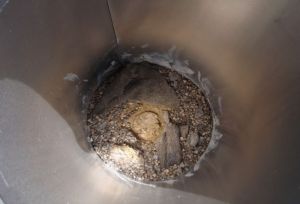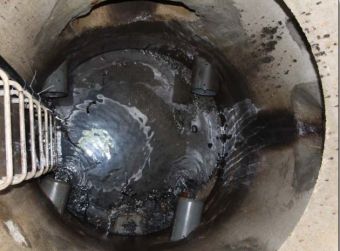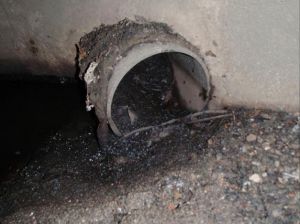Inspection and Maintenance: Underground Infiltration Systems
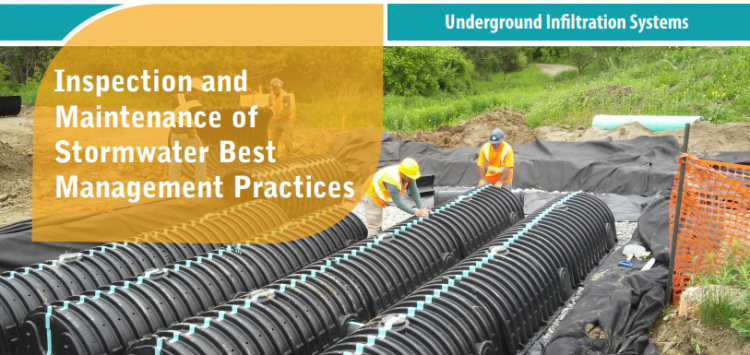
Overview[edit]
Underground infiltration systems is a general term that refers to best management practices (BMPs) that capture and temporarily store stormwater from hard surfaces. These systems treat stormwater by detaining it to allow suspended sediments to settle out and soaking it into the ground where it is filtered and cleansed by interaction with soil. Runoff water is delivered to the practice through pipes connected to catchbasins, hydrodynamic (i.e., oil and grit) separators, filters, manholes, sub-drains of other features or roof downspouts. They are installed below the local maximum frost penetration depth to ensure they continue to drain year-round. Water that is in excess of the storage capacity overflows to an adjacent drainage system (e.g., municipal storm sewer or other BMP), typically via pipe or manhole containing a control structure (e.g., weir wall), to safely convey flows during flood events. Depending on the permeability of the underlying soil, such practices may be designed without a sub-drain for full infiltration or with a sub-drain for partial infiltration. The sub-drain pipe may feature a flow restrictor (e.g., orifice cap, valve) for gradually releasing detained water and optimizing the amount drained by infiltration.
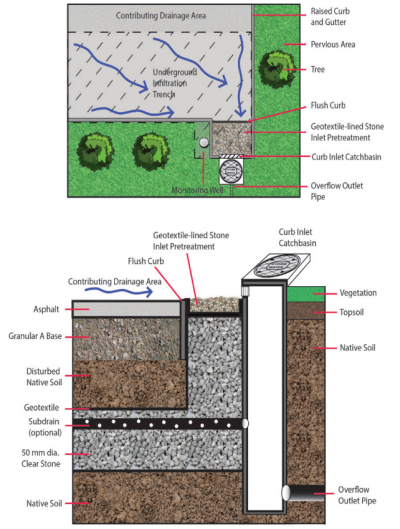
Key components of Underground Infiltration Systems to pay close attention to are the:
Trash, debris and sediment builds up at these locations and can prevent water from flowing into or out of the practice.
Associated Practices[edit]
- Soakaways: Typically service individual lots and receive only roof and walkway runoff but can also be designed to receive overflows from other BMPs (e.g., rain barrels or cisterns, rain gardens, green roofs. Also known as infiltration galleries, French drains, dry wells or soakaway pits.
- Infiltration trenches: Linear oriented soakaways designed to fit into narrow strips of land between structures or properties, or along road rights-of-way; can also receive road runoff with adequate pretreatment devices upstream of inlets.
- Infiltration chambers: Include a range of proprietary modular structures installed underground that create large void spaces for temporary storage of stormwater while providing sufficient load bearing capacity to allow construction of structures on top of them. Applications are similar to infiltration trenches. Also known as infiltration tanks or vaults.
- Perforated pipe storm sewer systems or Exfiltration trenches: Linear-oriented infiltration trenches installed parallel with conventional storm sewer pipes and catchbasins that receive stormwater from them. May include manholes with perforated risers. Also known as exfiltration storm sewer, percolation drainage, or clean water collector systems.
Inspection and Testing Framework[edit]
Component |
Indicators |
Construction Inspection |
Assumption Inspection |
Routine Operation Inspection |
Verification Inspection |
|---|---|---|---|---|---|
| Contributing Drainage Area | |||||
| CDA condition | x | x | x | x | |
| Inlet | |||||
| Inlet/Flow Spreader Structural Integrity | x | x | x | ||
| Inlet/Flow Spreader Structural Integrity | x | x | x | x | |
| Perimeter | |||||
| BMP dimensions | x | x | x | ||
| Filter Bed | |||||
| Filter bed sediment accumulation | x | x | x | ||
| Underdrain & Monitoring Well | |||||
| Monitoring well condition | x | x | x | x | |
| Sub-drain/Perforated pipe obstruction | x | x | |||
| Outlets | |||||
| Overflow outlet obstruction | x | x | x | x | |
| Control Structure | |||||
| Control structure condition | x | x | x | x | |
| Control structure sediment accumulation | x | x | x | x |
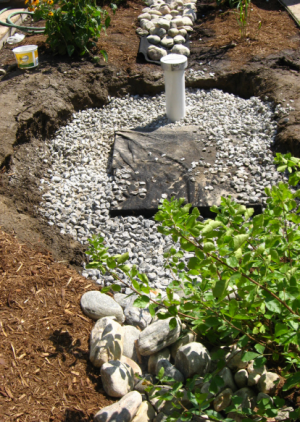
Component |
Indicators |
Construction Inspection |
Assumption Inspection |
Routine Operation Inspection |
Verification Inspection | |
|---|---|---|---|---|---|---|
| Testing Indicators | ||||||
| Sediment accumulation testing | x | x | x | x | ||
| Natural or simulated storm event testing | x | (x) | ||||
| Continuous monitoring | x | (x) | ||||
| Note: (x) denotes indicators to be used for Performance Verification inspections only (i.e., not for Maintenance Verification inspections) | ||||||
Construction Inspection Tasks[edit]
Construction inspections take place during several points in the construction sequence, specific to the type of LID BMP, but at a minimum should be done weekly and include the following:
- During site preparation, prior to BMP excavation and grading to ensure the CDA is stabilized and/or flow diversion devices are in place and confirm that construction materials meet design specifications
- At completion of excavation and grading, prior to backfilling and installation of pipes to ensure depths, slopes and elevations are acceptable
- At completion of installation of geotextile/pipes, prior to completion of backfilling to ensure slopes and elevations are acceptable
- After final grading, prior to surface course installation to ensure depths, slopes and elevations are acceptable
- Prior to hand-off points in the construction sequence when the contractor responsible for the work changes (i.e., hand-offs between the storm sewer servicing, paving, building and landscaping contractors)
- After every large storm event (e.g., 15 mm rainfall depth or greater) to ensure ESCs and pretreatment or flow diversion devices are functioning and adequately maintained. View the table below, which describes critical points during the construction sequence when inspections should be performed prior to proceeding further. You can also download and print the table here
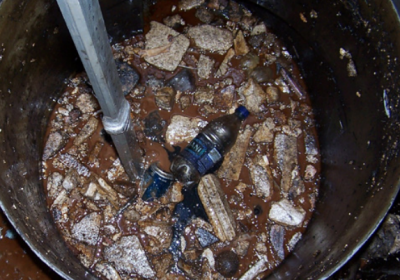
Construction Sequence Step & Timing |
Inspection Item |
Observations* |
|---|---|---|
| Site Preparation - after site clearing and grading, prior to BMP excavation and grading, prior to BMP excavation and grading | Natural heritage system and tree protection areas remain fenced off | |
| ESCs protecting BMP layout area are installed properly | ||
| CDA is stabilized or runoff is diverted around BMP layout area | ||
| BMP layout area has been cleared and is staked/delineated | ||
| Benchmark elevation(s) are established nearby | ||
| Construction materials have been confirmed to meet design specifications | ||
| BMP Excavation and Grading - prior to backfilling and installation of geotextile/pipes | Excavated soil is stockpiled outside the CDA | |
| Excavation location, footprint, depth and slope are acceptable | ||
| Compaction of subsoil where load-bearing portions of the system will be installed is acceptable | ||
| Excavation bottom and sides roughened to reduce smearing and compaction | ||
| BMP Installation – after installation of geotextile/ pipes/structures, prior to completion of backfilling | Installation of structural components (e.g., control manhole, maintenance hatches) is acceptable | |
| Sub-drain trench dams installed correctly (location, elevation) | ||
| Installations of sub-drain pipes (e.g., locations, elevations, slopes) & maintenance access hatches are acceptable |
Routine Maintenance - Key Components and I&M Tasks[edit]
Regular inspections (twice annually, at a minimum) done as part of routine maintenance tasks over the operating phase of the BMP life cycle to determine if maintenance task frequencies are adequate and determine when rehabilitation or further investigations into BMP function are warranted.
Table below describes routine maintenance tasks for permeable pavements, organized by BMP component, along with recommended minimum frequencies. It also suggests higher frequencies for certain tasks that may be warranted for BMPs located in highly visible locations or those receiving flow from high traffic (vehicle or pedestrian) areas or those designed with higher than recommended impermeable drainage area to permeable BMP footprint area ratios (I:P ratios). Tasks involving removal of trash, debris and sediment and weeding/trimming of vegetation for BMPs in such contexts may need to be done more frequently (i.e., higher standards may be warranted).
Individuals conducting vegetation maintenance and in particular, weeding (i.e., removal of undesirable vegetation), should be familiar with the species of plants specified in the planting plan and experienced in plant identification and methods of removing/controlling noxious weeds. Key resources on these topics are provided below at the links provided:
- Agriculture and Agri-food Canada’s Weed Info database
- Ontario Ministry of Agriculture, Food and Rural Affairs’ Ontario Weed Gallery
- Ontario Ministry of Agriculture, Food and Rural Affairs’ Noxious Weeds In Ontario list
- Ontario Invasive Plant Council’s Quick Reference Guide to Invasive Plant Species
- Oregon State University Stormwater Solutions, 2013, Field Guide: Maintaining Rain Gardens, Swales and Stormwater Planters, Corvallis, OR.
- Plants of Southern Ontario (book), 2014, by Richard Dickinson and France Royer, Lone Pine Publishing, 528 pgs.
- Weeds of North America (book), 2014, by Richard Dickinson and France Royer, University of Chicago Press, 656 pgs.
| Comnponent | Description | Inspection & Maintenance Tasks | (Pass) Photo Example | (Fail) Photo Example |
|---|---|---|---|---|
| Contributing Drainage Area (CDA) |
Area(s) from which runoff directed to the BMP originates; includes the pavement itself and any adjacent impermeable pavement or roofs that drain to it. |
|
||
| Pretreatment |
Devices or features that retain trash, debris and sediment; help to extend the operating life cycle; examples are eavestrough screens, catch basin inserts and sumps, oil and grit separators, geotextile-lined inlets, gravel trenches, grass filter strips and forebays. |
|
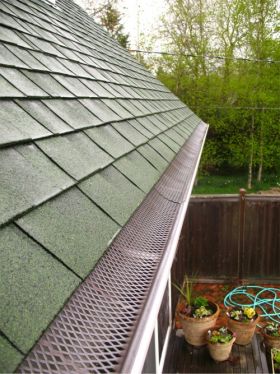 Although permeable pavers are generally considered pretreatment for other BMPs in a treatment train system, using eavestrough screens can act as pretreatment as they don't add to sediment build up and accumulation on the paver surface. (Photo Source: Guertin, 2010)[2] |
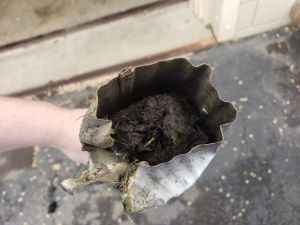 Build up of leads, sediment and leaf detritus in an eavestrough downspout disconnection leading to a permeable pavement surface. If not cleaned regularly this can lead to clogged pores between the pavers reducing the infiltration rate where the downspout deposits water onto the feature. (Photo Source: My Gutter Pro, 2021)[3] |
| Inlets |
Structures that deliver water to the BMP (e.g., impermeable pavement edges, pipes from roof downspouts or catchbasins). |
|
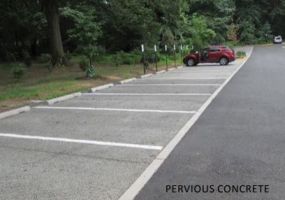 Impermeable pavement edges along the edge of the pervious concrete and impermeable asphalt graded so excess sheet flow is infiltrated down through the pores of the infiltration BMP. (Photo Source: Fairfax County, 2014)[4] |
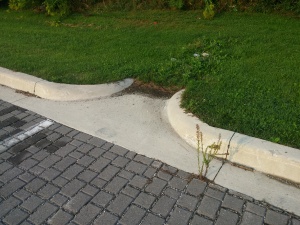 Accumulated sediment, poor grading and vegetation is preventing stormwater from entering the swale. Sediment on the curb cut surface behind of the inlet indicates ponding is also occurring and is depositing water towards the permeable paver surface. |
| Pavement Surface |
The surface of the pavement, including pavers/pavement, joints and edge restraints (e.g., curbs, edging); should not allow water to pond on the surface so any observation or evidence of surface ponding (e.g., sediment caking on the pavement) indicates a drainage problem. |
|
||
| Vegetation |
Applies to grid paver systems only; a mixture of deep rooting perennial grasses or low growing ground covers, tolerant to both wet and dry conditions and salt (if receiving impermeable pavement runoff); roots uptake water and return it to the atmosphere, provide habitat for soil organisms that break down pollutants trapped in the soil and help maintain soil structure and permeability. |
|
||
| Overflow Outlet |
Structures (e.g., catchbasin, curb-cut, swale) that convey flow that exceeds the storage capacity of the BMP to another drainage system (e.g., municipal storm sewer or other BMP). |
|
||
| Sub-drain |
Optional component; perforated pipe(s) surrounded by gravel and may be wrapped in geotextile filter fabric; installed in the base or sub-base gravel layer to collect and convey treated water to an adjacent drainage system or other BMP; may also include a flow restrictor. |
|
||
| Monitoring well |
Perforated standpipe that extends from the bottom of the excavation to just below the pavement surface and contains perforations or slots to allow measurement of subsurface water level; used to track drainage performance over the operating life cycle of the BMP. |
|
||
| Control Structure |
Manhole or catchbasin to which the subdrain outlets that provides access to the underdrain and flow restrictor. Inspect for accessibility, damage and sediment. |
|
- ↑ 1.0 1.1 1.2 1.3 TRCA. 2018. Fact Sheet - Inspection and Maintenance of Stormwater Best Management Practices: Underground Infiltration Systems. https://sustainabletechnologies.ca/app/uploads/2018/02/Underground-Infiltration-Systems-Fact-Sheet.pdf
- ↑ Guertin, M. 2010. Simple Screen Gutter Guards Better Than Pro-Installed Systems (and way cheaper). Fine Homebuilding - The Daily Fix. Accessed July 17 2022. https://www.finehomebuilding.com/2010/08/17/simple-screen-gutter-guards-better-than-pro-installed-systems-and-way-cheaper
- ↑ My Gutter Pro. 2021. Clogged Downspout : Causes and Solutions. 10 April 2021. Accessed July 19 2022. https://mygutterpro.com/downspout-clog/
- ↑ Fairfax County. 2014. Protecting our Environment, one Stormwater Practice at a Time - Permeable Pavements. April 2014. Accessed: July 20 2022. https://www.fairfaxcounty.gov/publicworks/sites/publicworks/files/assets/documents/pdf/factsheets/permeable-pavement.pdf
